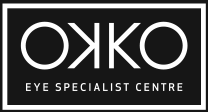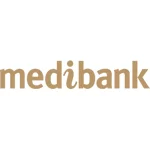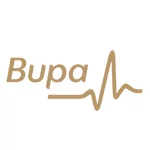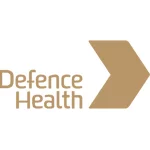©2024 OKKO Eye Specialist Centre. All Rights Reserved


Corneal surface disorders like Keratoconus and Ocular Surface Disease, present challenges that can affect both vision clarity and eye comfort. Keratoconus involves progressive thinning and bulging of the cornea, while Ocular Surface Disease encompasses various conditions that disrupt the eye’s surface integrity.
At OKKO, we specialise in comprehensive treatments designed to effectively address these complex disorders. From state-of-the-art therapies aimed at stabilising corneal irregularities to advanced surgical interventions tailored to each patient’s needs, we offer a range of solutions to restore vision and improve quality of life.
Learn how your keratoconus can be treated by one of our leading eye specialists in Brisbane
With corneal cross-linking, we aim to stabilise vision. Some patients experience visual improvement from cross-linking or take the route of correcting their vision after treatment with INTACS.
Your doctor will discuss all possible treatment options with you, and be able to recommend the best one for you and your eyes
Keratoconus doesn’t have to mean giving up all the activities you enjoy. Our doctors can help manage your condition with compassion and understanding, to ensure you are still getting the most out of your life.
Not understanding your condition can be a scary thing. Our doctors can help you not only understand more about keratoconus, but also how to manage this condition.
In this video, Dr. Nick Toalster explains how keratoconus treatment brings relief to patients
Book a consultation, and one of our Brisbane eye experts will guide you towards the right treatment for your keratoconus so you can take back control of your life.
Corneal cross-linking (CXL) is recommended for patients whose corneal scans show evidence of worsening keratoconus, or those who might be at especially high risk of worsening keratoconus. Progression of keratoconus usually stops by the mid-30s, so is not normally required for older patients.
Healthy corneas are able to retain their shape due to strong bonds (cross-linkage) between collagen fibers. When keratoconus occurs, these cross links, or support beams, break down, weakening the cornea and causing the tissue to bulge outwards. Corneal cross-linking uses riboflavin eye drops and ultraviolet light to increase the amount and strength of the collagen bonds, therefore strengthening the cornea and preventing further loss of vision.
Advantages
Disadvantages
In general, cross-linking is very safe,3but you should allow time for your eye to heal and problems do occasionally occur. About 3% of patients will experience some loss of vision in the treated eye as a result of haze, infection, or other complications.4
In most cases, we can reverse any visual loss with a corneal transplant. Without cross-linking treatment, at least 20% of all patients with keratoconus will eventually require a corneal transplant.5
In general, CXL is very safe,6but like all operations, your eye needs time to heal, and problems do occasionally occur.
About 3% of patients will lose some vision in the treated eye as a result of haze, scarring, corneal surface shape irregularity, or infection.7 In most cases, this visual loss is potentially reversible with a corneal transplant.
Without CXL treatment, at least 20% of all patients with keratoconus will eventually require a corneal transplant. The risk of transplantation for patients with documented disease progression is probably higher.8
We can combine cross-linking with intracorneal or intrastromal rings to flatten the keratoconus bulge even more. The rings stabilise keratoconus which prevents it from getting worse.
Step 1: We numb the surface of the eye, so you feel no pain.
Step 2: We remove the epithelial cell layer from the central part of the cornea, and apply the riboflavin eye drops.
Step 3: Once the eye drops have penetrated the cornea, we focus the UV light onto the central area of the cornea for 10 minutes.
Step 4: Finally, a bandage soft contact lens is applied. The contact lens is worn for up to 2 weeks until the surface epithelial cell layer has regrown.
Cross-linking is currently the only available treatment that appears to stop the worsening of keratoconus.9
Clinical trials based on outcomes one year after cross-linking show success in the halting of keratoconus in more than 90% of treated eyes, with more than 45% of eyes also gaining an improvement in corneal shape.10 A separate study over five years showed a similar success rate in halting the progress of keratoconus.
Visual improvement after treatment occurs in approximately 50% of cases. However, after treatment, you will still need to wear spectacles or contact lenses.11
Learn what treatment options are available for ocular surface disease in Brisbane
The cornea is the clear front layer of the eye that serves as an important protective barrier. Our goal is to help you keep it healthy.
Ocular surface disease can cause significant discomfort and vision problems. Treatment aims to reduce these symptoms so you can enjoy life without distraction.
Our treatment options can help ease the difficulties you’re experiencing day-to-day due to ocular surface disease.
Discover how treatment for ocular surface disease can improve your quality of life.
The OKKO Eye Specialist Centre team is highly experienced in the diagnosis, treatment and management of a comprehensive range of eye conditions, including cataracts, glaucoma and macular diseases.
The cornea can recover from minor injuries on its own. If it is scratched superficially, healthy cells slide over quickly and patch the injury before it causes infection or affects vision. But if a scratch causes a deep injury to the cornea, or if a patient’s immune system is not working as it should due to other disease, it will take longer to heal. This sort of injury often causes pain, blurred vision, tearing, redness, and extreme sensitivity to light. People with these symptoms need professional treatment.
Every treatment has its advantages and disadvantages. However, we can manage corneal surface disorders effectively, provided we choose the approach and therapy carefully, based on discussions with our patients, the functional effects observed, and their severity.
Other treatments include:
Laser: To treat some corneal disorders, we can use a type of laser treatment called phototherapeutic keratectomy (PTK) to reshape the cornea, remove scar tissue, and make vision clearer.
Corneal transplant surgery: If we cannot repair the damage to your cornea, we can remove the damaged part and replace it with healthy corneal tissue from a donor.
Artificial cornea: As an alternative to corneal transplant, we can replace a damaged cornea with an artificial cornea, called a keratoprosthesis (KPro).
We will talk you through the treatment steps and options once we have devised a personalised treatment plan for you.
Depending on the type and severity of ocular surface disease, most patients regain good visual function and suffer no permanent eye damage with treatment.1
Deep scratches on the cornea or chronic, untreated ocular surface disease can cause infections, scars, and other problems that can lead to long-term vision problems.
Report any unusual symptoms, including a return of pain after treatment, to your eye doctor.
Get the expert eye treatment you need in 3 easy steps
Give us a call on: 07 3725 0222 and we’ll guide you towards an initial consultation.
During your initial consultation, we will take a detailed medical history and examination to make an accurate assessment of the issue at hand.
We will treat you at one of our state-of-the-art Brisbane eye clinic facilities, with the aim of giving you the optimism and confidence to re-engage with life.
OKKO aims to provide life-changing vision transformation to patients









A guide to how to manage/treat ocular surface diseases. Click here to find out more.
Learn more about your corneal condition and when to see a doctor. Click here to find out more.
Recognition and treatment of ocular surface disease in glaucoma patients may improve patient quality of life and medication adherence. Click here to find out more.
A guide to basic information about keratoconus as well as 10 possible treatment options. Find out more.
Corneal cross-linking is usually the best treatment for patients with keratoconus if they are viable candidates for the procedure. Find out more.
Corneal cross-linking may provide more benefits than just stopping the progression of keratoconus.Find out more.
Dr Russell is regarded as an ophthalmic microsurgery specialist with international training in refractive surgery, medical retinal disease, and cataract surgery. He has also served as a clinical assistant professor at the University of British Columbia in Canada.
Dr Russell started in private practice in 2007 with Vision Eye Institute in Brisbane and has since gone on to found OKKO Eye Specialist Centre and VSON Vision Correction Specialists.




Dr Nick Toalster is an ophthalmologist with advanced training in cataract, glaucoma and corneal microsurgery. Dr Toalster has a particular focus on individualising treatments for each patient and a passion for blending the use of the latest medical technology with compassionate care.
Dr Toalster is a fully qualified optometrist and ophthalmologist, having graduated with honours from both Queensland University of Technology in 2002 & the University of Queensland in 2010.


Dr Eve Hsing is a comprehensive Ophthalmologist specialising in medical retinal conditions including macular degeneration, diabetic eye disease and vascular occlusion, as well as general eye conditions such as cataracts and pterygium surgery.
Dr Hsing takes pride in taking the time to ensure her patients fully understand their eye condition and treatment options. In her spare time, she enjoys playing music and has been a member of the Queensland Medical Orchestra throughout her medical training.


Dr Wang is an ophthalmologist with subspecialty training in oculoplastics, ophthalmic cataract microsurgery, and medical retina. Passionate about providing personalised, top-tier care, Dr Wang offers treatments for a range of ophthalmic conditions, including cataracts, macular degeneration, diabetic retinopathy, and eyelid, lacrimal, and orbital diseases. Fluent in Mandarin and Cantonese, Dr Wang is committed to making healthcare accessible to a diverse patient base.
